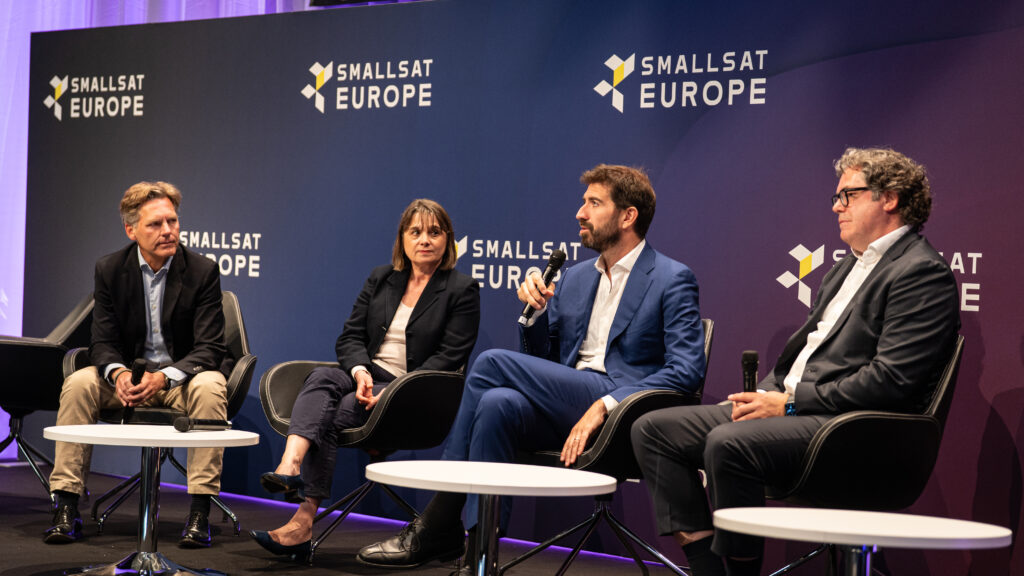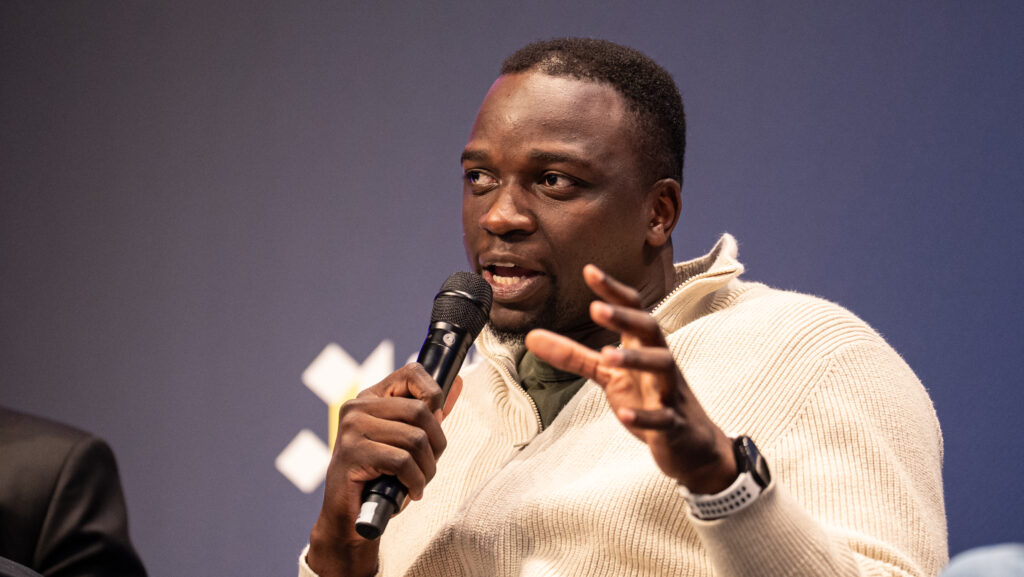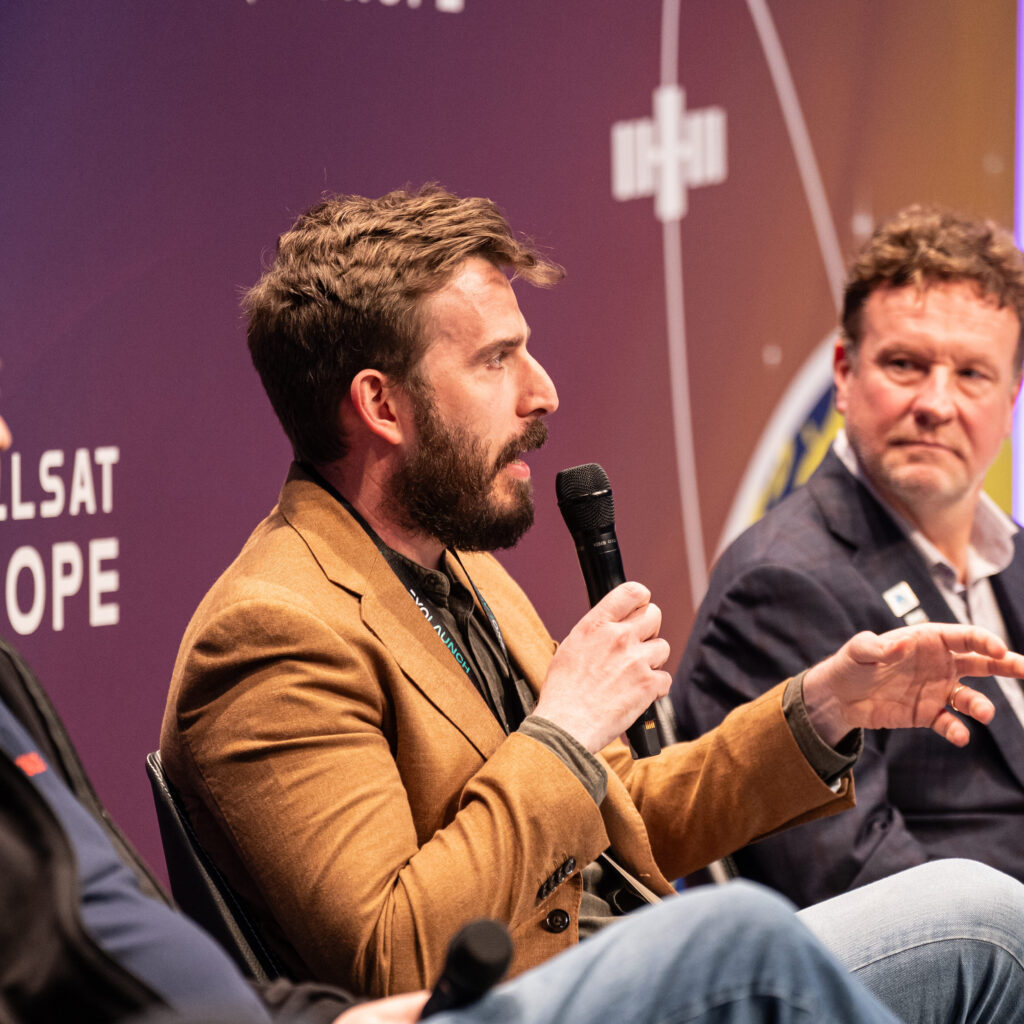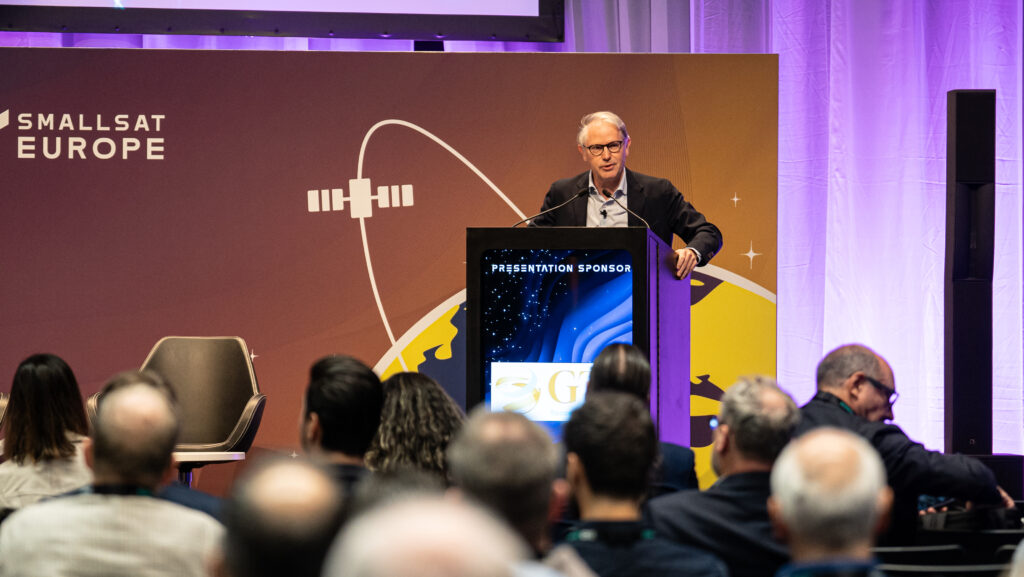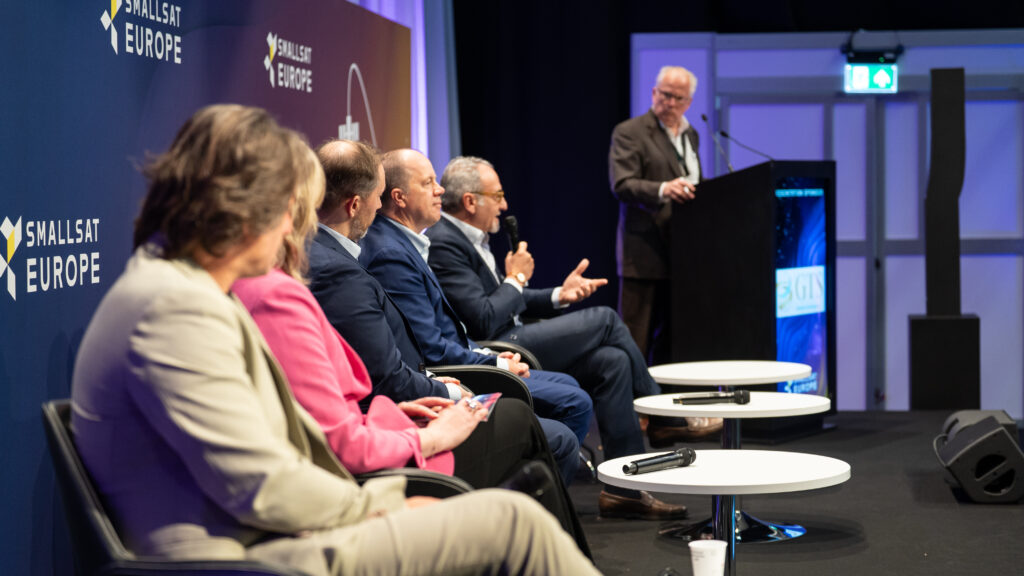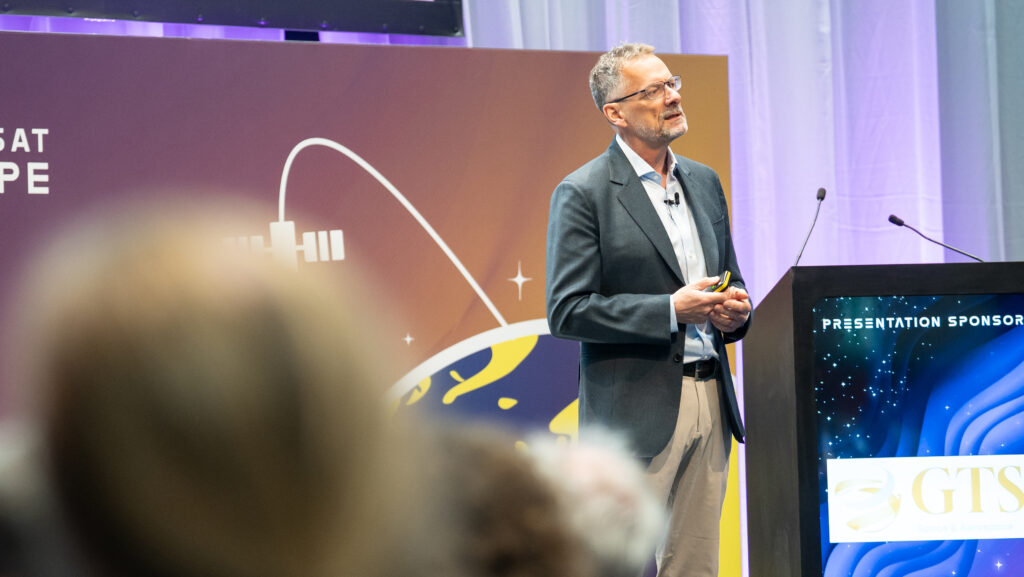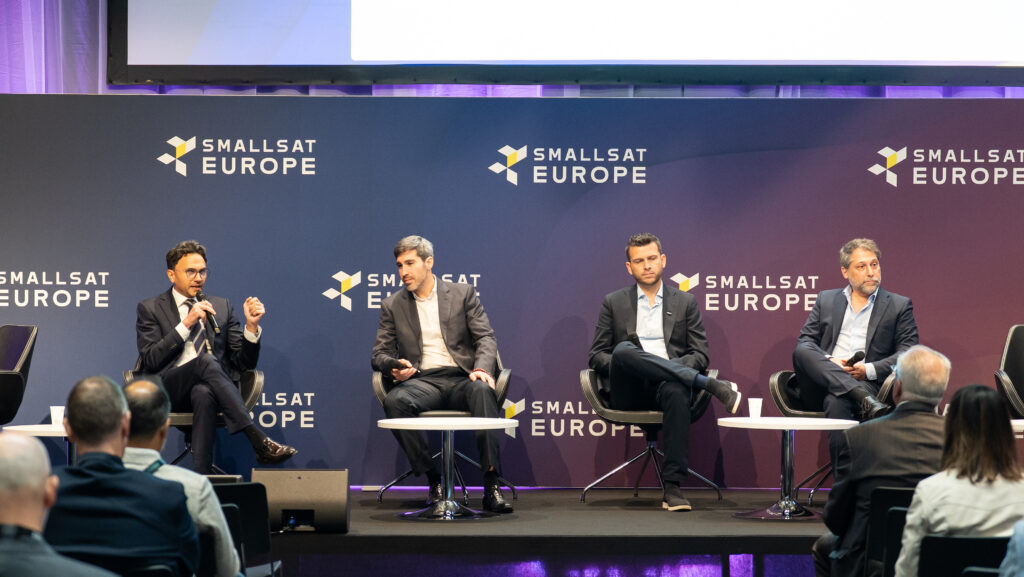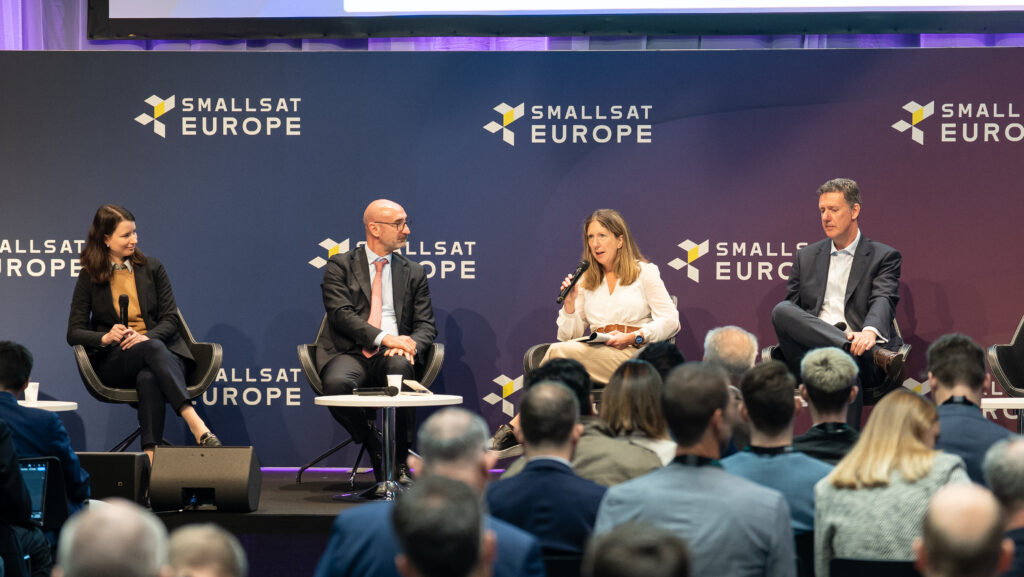By Chris Forrester
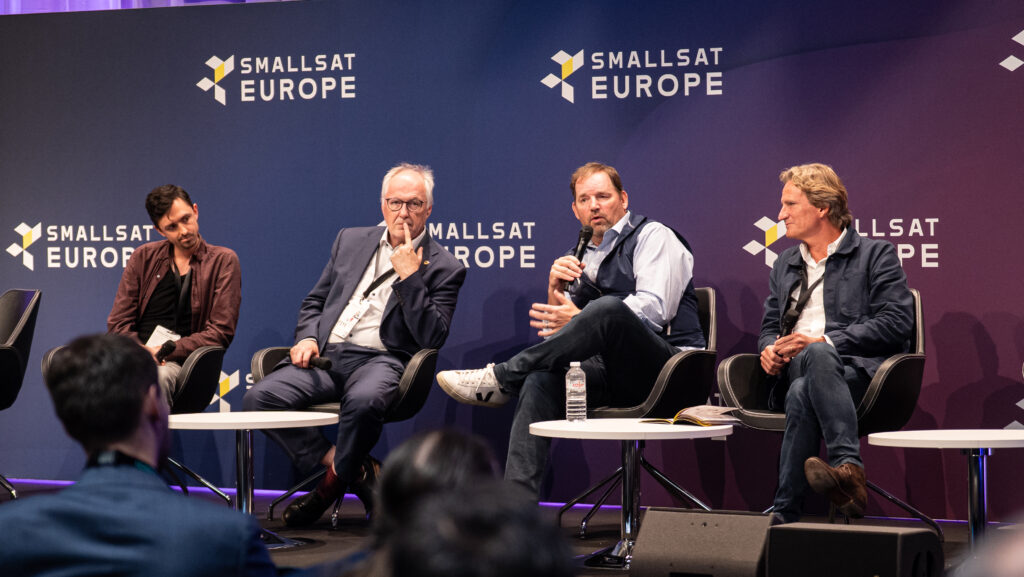
Noel Rimalovski (Managing Director, New York-based GH Partners). At GH, Mr. Rimalovski specializes in the telecom, media, technology, space and defense sectors, and moderated this panel at the Smallsat Europe event in Amsterdam on May 27. He asked panellists how they viewed the current financial market (better, worse, much the same) compared with 2024. He also polled a question to delegates as to whether there would be significant cross-Atlantic investment activity this year, and 69% of respondents said ‘No’.
Sven Meyer-Brunswick (Principal, Alpine Space Ventures) said he loved the science stuff, but was concentrating on space as an industry. This is what drives growth, he said, and cash needed to be deployed where operators and nations were under threat and where critical infrastructure was involved. The recent geopolitical changes also mean there’s cash being unlocked for Defense-related concepts, and almost every European nation is upping its spending on Space.
Daniel Biedermann (Investment Partner, at Luxembourg-based NewSpace Capital) has over 30 years of experience in the satellite and launcher sectors, including manufacturing, operations, business development and strategy. He suggested that looking at any potential company there needed to be a comprehensive understanding – by the business – of developing the market, growing the business, and the potential for business maturity. The recent problems out of Washington now puts a number of extra hurdles to be overcome. Businesses will have to decide whether they want to make those moves. But if your target market is in the US then you have no option except to clear and hire US security cleared staff, for example.
Mike Collett (Managing Partner, Promus Ventures) and an investor in – amongst others – Rocket Lab. He explained that their investment strategy was not limited to Europe or the US or elsewhere, but whether the business was capable of growth. Rocket Lab was one such perfect example. Defense is a big deal, and this is very useful in Earth observation. Collett said that the Trump administration had now placed a number of barriers into the mix as regards cross-Atlantic activity. But we are now seeing companies saying they do not want to go to the US. He also stressed that while the IPO window was largely closed, the fact was that AI was sucking the air out of the market.
Charles Beigbeder (General Partner, Expansion) said he had 23 businesses in its funding portfolio. Some aspects were true cross-overs and Earth observation was very useful in climate change but was also valuable to other end-users including the military. He said that some businesses that Expansion was supporting would take anything from 4 years to much longer to secure investment. The good news from the Oval Office over the past few months is the move in Europe which states they want European autonomy. “But they will still go to the US because the market demands it.”
The panel agreed that the next few years would see consolidation in Europe, whether from private Launch providers, or Earth Observation data analysis. Beigbeder suggested that Europe’s 15 or so rocket launch companies would end up being just 3 or 4 within a year or two, and this excluded Arianespace.
Sven Meyer-Brunswick was also pessimistic about Europe’s mega-project IRIS2 and said in his view the scheme was “dead in the water”.

